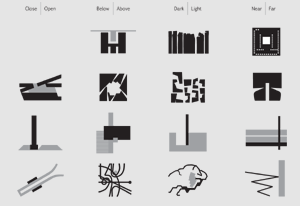|
|
|
10th International Architecture Exhibition
La Biennale di Venezia
The Israeli Pavilion
Life Saver; Typology of Commemoration in Israel- Architecture and Society
Tula Amir
Commemorative and memorial buildings are limit marking structures: they constitute
extreme expressions of a culture’s architectural symbolism. These buildings harbor
especially charged contents, and are designed to communicate a clear message to
a large and diverse audience within a limited period of time. This exhibition examines
commemorative and memorial buildings in Israel, and the strong connection between
society, culture and architecture.
The immediate issue that emerges in relation to such structures concerns architectural
manipulation and its legitimacy. It raises the question of whether architecture in general,
and commemorative architecture in particular, may aspire to control the viewer’s
emotions and to create a particular kind of experience, and therefore to shape the viewer’s
consciousness.
Commemorative and memorial buildings in Israel do not document or directly translate an
event or a period into three dimensions. The characteristic approach to these structures
regards them as mediators between the past and present – and the future. These structures
create a foundation of legitimacy for the needs of Israeli society, which is constrained to
continue and sacrifice human lives, by justifying the existential difficulties of the present
and the future price they will demand. The historical narrative – the narrative related to
the past and to bereavement – is not the entire story. These buildings and monuments tell
another story, a story unique to this country. They document history, death and pain, while
simultaneously shaping another, forward-looking gaze directed towards the future.
The creation of these buildings and their architectural design thus validate existing
myths and social decrees within the special context of Israeli society. This architecture
builds, if only unconsciously, upon the emotional platform that exists in Israel in relation
to remembrance and commemoration. At times, it even takes advantage of the vulnerable
status of the viewer, who is contained within a clearly coded experience, in order to steer
him towards a conclusion shaped by architectural means.
This exhibition examines the architectural dimension of commemoration, which engages
the remembrance of the past for the sake of the future; it does so by taking up the dichotomy
between two limit-marking conditions – the past and present in contrast with the future –
and by translating them into three dimensions. It is important to note, at this point, that
this exhibition focuses upon this phenomenon as it is expressed in Israel’s Jewish sector,
which comprises approximately eighty percent of the country’s population. The approach to
remembrance and commemoration within Israel’s Arab-Palestinian minority represents a
completely different narrative, which is given almost no architectural expression in Israel.
Israeli history is anchored by two dominant points of reference, to which remembrance
and commemoration are always related. The first and main point of departure is the birth
of the Jewish state out of the trauma, loss and pain of the Holocaust. The second center
of gravity is the wars fought by Israel, beginning with the War of Independence (1948) and
continuing with the Sinai War (1956); the Six Day War (1967); the War of Attrition (1970);
the Yom Kippur War (1973); and the Lebanon War (1982). These wars, and everything that
took place between them, represent, in the Israeli narrative, a battle for the survival of a
country born of out of the cinders of the Holocaust.
The justification of Israel’s wars legitimates the loss of life in the past and its possible loss
in the future; the continuation of unconditional cooperation between the country’s military
and defense establishment and its individual citizens; and an unequivocal understanding
that this struggle is the only means for Israel’s survival.
Israeli bereavement is not only a private matter, but rather one that has been harnessed to
a collective cause. Expressions of commemoration and remembrance in Israel are unique in terms of their extent, which reaches far beyond architectural structures – visual and
conceptual reminders of a state sanctified with blood. The numerous commemorative and
memorial buildings in Israel partake of a multitude of sites of memory. Everyday life in
Israel is saturated by holidays, festivities and other elements that commemorate national
events and themes: place names such as Kibbutz Lochamey HaGetaot (named after the
fighters in ghetto uprisings) and Nettiv HaLamed He (a kibbutz named after 35 soldiers
who died during the War of Independence); street names and commemorative plaques
on ambulances and emergency equipment, in public gardens and on trees; monuments,
memorial sites, public buildings, internet sites, military cemeteries, forests, woods and so
on. The need for commemoration is universal; nevertheless, Israel is unique in terms of the
sheer quantity of memorials, the manner in which the act of commemoration is expressed
and the architectural manipulation it involves.
The buildings shown in this exhibition represent a unique form of architectural expres-
sion, which commemorates radically different historical narratives. Nevertheless, from
an architectural standpoint there is no significant conceptual difference between the
approach to commemorating the Holocaust and the approach to commemorating Israel’s
fallen soldiers. Furthermore, there is no conceptual difference between the architectural
approach to commemoration in the early years of Israeli statehood and that prevalent
today, some fifty years later.
The concept that unifies these different structures is a special kind of “order,” which is
uniquely employed in Israel in commemorative and memorial buildings. The essence of this
“order” is constituted by diametrically opposed spatial forms. With almost no exceptions,
these structures employ more than one kind of spatial reversal. These reversals allude
to two contradictory states related to the representation of time – of both the past and the
future. In most cases, viewers inhabit one temporal dimension while they are inside the
structure, and emerge from it into another temporal dimension. The past and the present
unfold as viewers pause, walk and examine the interior of the building, and they become
conscious of the passage into another temporal dimension as they progress out of the
structure.

This exhibition attempts to portray a unique characteristic of Israeli commemorative
architecture. By translating the idea of two different temporal dimensions into diametrically
opposed architectural spaces, this architecture structures a unique gaze, at once
backward-looking (towards the trauma of the past) and forward-looking (towards future
life). As an inseparable part of Israeli society, local architects portray this message
through the creation of two contrasting experiences. The three-dimensional nature of
commemoration, which is both backward-looking and forward-looking, is represented by
means of the following sets of concepts: closed and open, dark and light, below and
above, near and far. In the case of memorials, this dual gaze is sometimes expressed in
terms of the memorial’s location – facing the landscape, or rising up against a background
of vegetation that symbolizes life, growth and continuity. Some buildings contain an
observatory with a particular visual perspective, which directs the gaze out to the distance,
into space, at the cause, to the future.
The exhibition “The Typology of Commemoration in Israel” is constructed around an itinerary
that invites viewers to experience a series of oppositions created through architectural
means. The pavilion exhibits the architectural solutions implemented in commemorative
and memorial buildings in Israel, and raises issues concerning architectural symbolism,
architectural experience and the relation between space and concept. The visitor passes
through a series of diametrically opposed spaces, which exemplify the architectural
expression of central themes in Israeli commemorative buildings.
The pavilion is divided into three levels. The entry level structures the initial experience of
a passage from darkness into light and from a low vantage point to a high vantage point.
The visitor is then guided to the third level, where the models, sketches and pictures of 15
commemorative buildings are exhibited. The black-and-white models are conceptual in
essence. They represent the ideas relevant to each one of these sites, and analyze the
themes of presence and absence in the architectural space. The models are made out of
plastic, which stands out in opposition to the stone, concrete and metal usually used in
commemorative structures; yet in contrast to these “natural” materials, it is plastic that
endures the test of time.
Exhibited alongside the models is a display of architectural documents: plans, sections, and
elevations; details about each building and its planner; and photographs of the buildings.
In this space, one may look out into the distance through narrow viewing slits, another
form of spatial reversal that exists in some of these buildings. Visitors then descend to the
second level, where they experience the concept of “above and below” through a series
of photographs of an alley of cypress trees. Also exhibited in this area is a graphic display
containing data about official commemorative monuments in Israel, which numbered 900
by 1995 (numerous official memorials have since been erected throughout the country, in
addition to private memorials).
The garden of the pavilion contains 30 memorial torches, of the kind displayed on every
public building in Israel during the two weeks between Passover and Memorial Day. The
narrative of Israel’s culture of commemoration is condensed within this two-week period.
Passover signifies the transition from slavery to freedom; it is immediately followed by
Holocaust Martyrs and Heroes Remembrance Day; a week later, Israel observes Memorial
Day in remembrance of the country’s fallen soldiers and those killed in terrorist attacks;
Memorial Day ends on the eve of the Day of Independence. At the end of this two-week
period, the torches are stored for the remainder of the year.
The exhibition ends with a projection of an Israeli video work depicting a pieta-like scene,
which represents the universal theme of bereavement and leavetaking. The soundtrack
accompanying the work is that of the prayer “God Abounding in Mercy,” which is recited
at Jewish funerals for the transcendence of the soul of the deceased. This video work
transports the viewer back from the realm of spatial experience to the realm of personal
loss and grief.
The exhibition is accompanied by a poem by Yehuda Amichai, in which a memorial
wreath characteristic of commemorative ceremonies is extended like a lifesaver to the
soldiers buried beneath it. The metaphor of a funerary wreath as a lifesaver establishes
a connection between those underground and those laying the wreath above ground,
and relates the past and present to the future. This metaphor refers to the reciprocal
commitment and unbreakable bond between the dead and the living; it bespeaks
acceptance of the fact that death is also a form of oblivion, and that collective memory
effaces individual memory.
Translation: Aya Rupin
|
|

